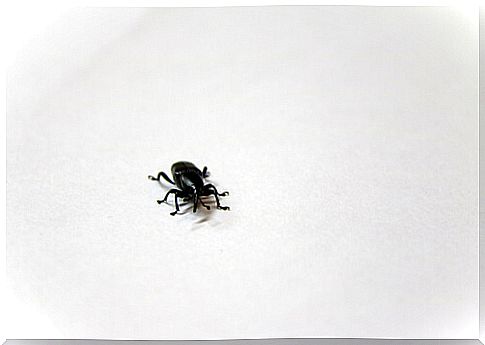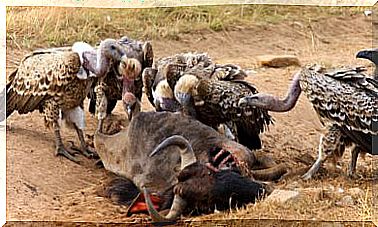What Is The Smallest Insect?

Some species of insects stand out for their enormous size, such as the famous Madagascar cockroaches. However, most of the insects that we see in our day to day are characterized by a tiny size. In fact, the smallest insect in the world is less than a millimeter long and is impossible to recognize with the naked eye.
Scydosella musawasensis : the smallest insect in the world
The tiny beetle Scydosella musawasensis is the smallest non-parasitic insect in the world. Its body is just 0.325 millimeters long, shorter even than many single-celled organisms. In fact, some bacteria such as Thiomargarita namibiensis can be twice their size.
To make a simple comparison, the body of a common ant is about 20 times the size of this beetle. With this example it is easier to understand how small a third of a millimeter can be.

To see them we need at least an excellent magnifying glass with a high magnification capacity. This species has only been recognized and scientifically cataloged with the help of sophisticated microscopes with advanced technology.
Origins of the beetle Scydosella musawasensis
The smallest insect in the world was initially found in mid-1999 in Nicaragua. Interestingly, at the time, available technology did not allow researchers to accurately measure the size of the Scydosella musawasensis beetle .
It was in the present decade when the measurement of some specimens found in Colombia was successful. The person responsible for this discovery was the entomologist Alexey Palilov, a researcher at the MV Lomonosov State University in Moscow.
Dr. Palilov was in charge of examining the beetles found in the Chicaque National Park, in Colombian territory. And in his latest article published in the scientific journal ZooKeys, the researcher reveals that digital micrographs were necessary to determine the length of said insect.
To obtain high precision digital micrographs, scanning electron microscopes were used, combined with a modern computer program specialized in detailed measurements. This explains why the Scydosella musawasensis beetle is only now recognized as the smallest insect in the world.
Small, yes, parasite, no
Perhaps the most interesting thing about this tiny species is the fact that it is not a parasitic species. Scydosella musawasensis beetles feed on the spores of Basidiomycota fungi , where they also find their natural habitat.
This means that the smallest insect in the world is independent; it does not need to parasite on another living being to feed and survive. Despite its vulnerable appearance, the tiny beetle can take care of itself and contribute to the ecosystem of which it is a part.
Scydosella musawasensis : so far, unique
Scydosella musawasensis specimens from Nicaragua and Colombia are so far the only known representatives of their genus. Interest and investment in further research on this tiny beetle are expected to grow from the latest discoveries.
Its most representative morphological characteristic is the oval body that shows shades of brown and yellow. In addition, they stand out for their tiny and striking antennas, whose structure is divided into 10 segments.
Other really small animals
As we see, the Scydosella musawasensis beetle is surprisingly tiny, but this insect is not alone in the list of really small species. Next, we will see other really small animals.
The Pygmy Marmoset
The pygmy marmoset is the smallest species of monkey known in the world. Originally from the rainforests of Colombia, Ecuador, Peru and Brazil, their body measures just 35 centimeters, with 100 grams of weight.
Bookesia Minima de Madagascar
Native to the island of Madagascar, the Brookesia Minima chameleon is considered one of the smallest reptiles on the planet. Its body is less than an inch in length and has the incredible ability to camouflage itself among the leaves of a tree.
Craseonycteris thonglongyai
Better known as a pig’s nose or bumblebee, Craseonycteris thonglongyai is the smallest bat ever discovered. Native to Thailand and Burma, these tiny mammals measure less than three centimeters and weigh no more than two grams.
Paedocypris carp
The Paedocypris progenetica carp is the smallest species of fish known to date. They were discovered in the swamps of Sumatra, where they feed mostly on plankton; They usually measure less than eight millimeters and stand out for their peculiar skull, very rudimentary and their brain visible.









